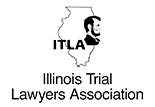Infant Hypoxic Ischemic Encephalopathy (HIE)
Table of Contents
Hypoxic ischemic encephalopathy can be one of the most serious of birth injuries, and is caused when the infant’s brain is deprived of blood, and therefore oxygen. When brain cells don’t get enough oxygen, within minutes, they begin to die.
Because hypoxic ischemic encephalopathy (HIE) is associated with brain damage that can cause a host of lifelong injuries, it requires prompt medical attention to help restore oxygen levels and prevent further damage.
According to estimates, HIE impacts 20 out of every 1,000 full-term births, and between 40 to 60 percent of all children impacted die by the age of 2, making HIE the leading cause of both death and disability among infants. (Ref. 1)
In some cases, however, the oxygen deprivation is so mild or is treated so quickly that there are no side effects.
What Causes Hypoxic Ischemic Encephalopathy?
Hypoxic ischemic encephalopathy is caused when asphyxia robs the baby’s brain of oxygen. While a newborn can go without oxygen for a short while, if asphyxia lasts too long, brain cells die and brain tissue is destroyed.
HIE is different than other oxygen-related brain injuries because it is marked not only by hypoxia, a reduction in oxygen to the brain as well as the rest of the body, but also ischemia, which is low supply of blood to vital organs including the brain.
Potential HIE-Related Impairments
The loss of oxygen is serious business, and can lead to a wide range of health problems including:
- Epileptic seizures
- The impairment of motor skills and function
- Developmental delays
- Cognitive impairments
- Neurodevelopmental delay
- Cerebral palsy.
In most cases, it will be impossible to determine the degree of impairment until a child reaches age three or four, and begins missing developmental milestones.
What Are the Symptoms of HIE?
While medical professionals will often be aware if a baby experiences a loss of oxygen, there are a number of symptoms associated with HIE, including:
- Amniotic fluid that has been tainted with meconium (baby’s first stool)
- Decreased heart rate
- Poor muscle tone
- Respiratory difficulties including shallow breathing or no breathing
- Pale or blue skin, reflecting a lack of oxygen
- Drifting in and out of consciousness
- High blood acidity
What Causes HIE?
There are a wide range of risk factors associated with HIE, which can occur before birth, during labor or shortly after birth.
Some risk factors linked to the mother include:
- Vascular disease caused by maternal diabetes. The high levels of blood glucose associated with diabetes can damage blood vessels, which has the potential to limit blood flow to the infant.
- This form of high blood pressure associated with pregnancy can divert blood away from the baby, leading to lower oxygen levels.
- Blood circulation to the placenta. When the placenta doesn’t get enough blood, neither will the baby.
- Cardiac disease. Heart disease can impact the flow of blood and oxygen to the baby.
- Drug and alcohol abuse. Most drug and alcohol use can have a negative impact on oxygen that’s available to the infant.
Fetal infections, malformations of the fetal lungs and fetal anemia can also cause cases if HIE.
Delivery is also full of risk factors for HIE, especially complicated deliveries. Some potentially dangerous complications linked to HIE include:
- Excessive bleeding from the placenta, which diverts blood from the baby.
- Low maternal blood pressure, which also limits blood and oxygen availability to the baby during birth. Low blood pressure can be caused by pain relievers such as an epidural administered prior to delivery.
- Umbilical cord accidents, including compression of the cord, which can occur if the baby is too large to easily exit the birth canal, or if the umbilical cord becomes wrapped around the baby’s neck during delivery.
- Prolonged labor.
- Abnormal fetal position.
- Rupture of the uterus or placenta.
HIE can also be caused by premature birth, infections including sepsis (an infection of the blood) or meningitis (infection of the membranes surrounding the brain or spine), low infant blood pressure, head trauma, and cardiac or pulmonary disease.
How is HIE Treated?
Doctors have various options to treat HIE, depending on the level of damage the baby’s brain has sustained.
Treatment options including ventilation or other treatments to keep the baby alive, cooling therapy that has the potential to relieve brain hypoxia caused by high temperatures, hyperbaric oxygen treatment, and medications to control blood pressure or seizures.
What Should I Do If My Baby Was Diagnosed with HIE?
Because hypoxic ischemic encephalopathy is often a catastrophic birth injury, the costs associated with treating your child in the aftermath as well as throughout the rest of his or her life can be sizeable.
Because HIE is often the result of negligence on the part of medical professionals treating you and your child during your pregnancy and delivery, seeking a birth injury attorney to help you determine whether or not you should seek compensation for your injury could help alleviate those costs, so the financial burden does not overshadow caring for your child.
An experienced attorney will have the resources available to obtain medical experts who can help cement your case, whether it is settled out of court or goes before a jury as part of a medical malpractice trial.
For more information, call our offices today. Your consultation is free, and you won’t pay any fees until we obtain a settlement in your case.
REFERENCES:
- https://www.sciencedirect.com/science/article/pii/S1527336911001000












